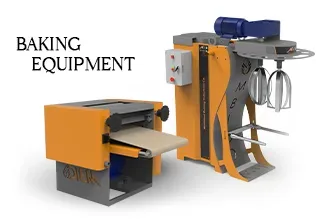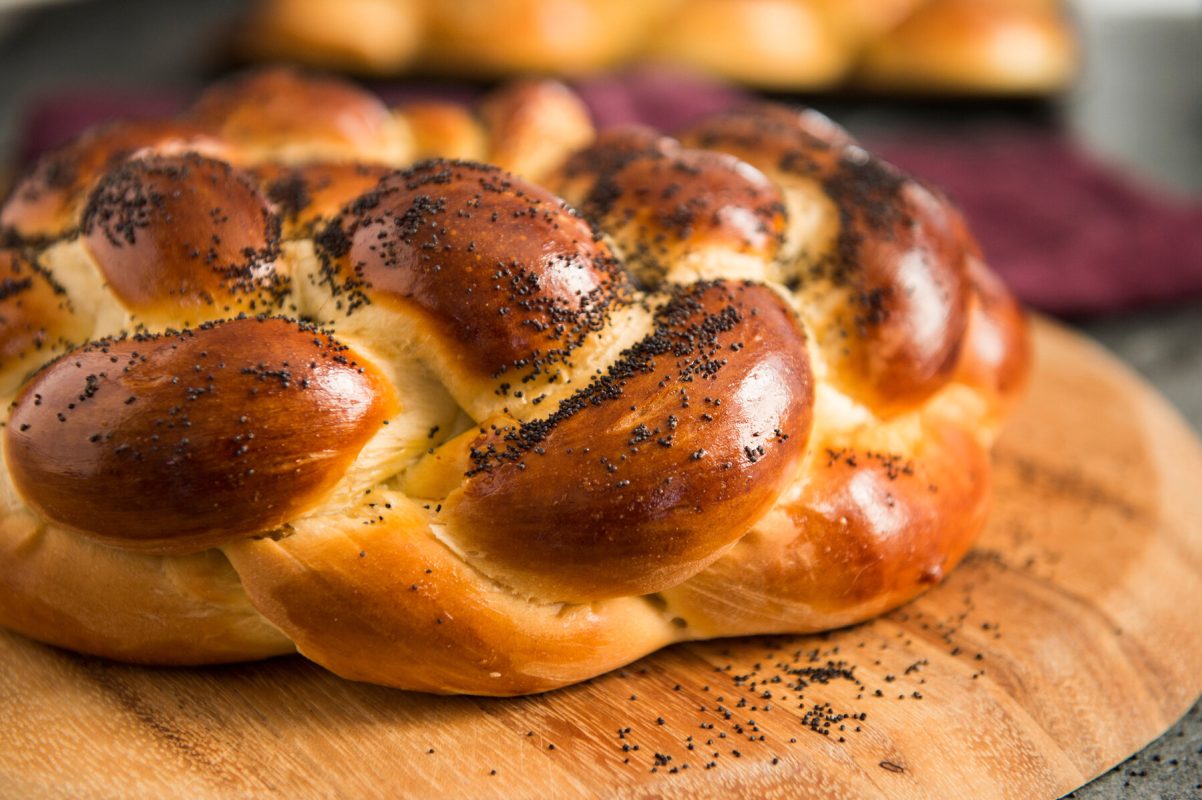Recipe
Challah: The Golden Braid of Baking Science and Tradition
I remember my first attempt at Challah like it was yesterday. Full of enthusiasm, I followed a recipe to the letter, expecting a golden, airy masterpiece. What emerged from the oven was a dense, somewhat dry brick, its once-beautiful braid deflated. Sound familiar? Many passionate home bakers and even aspiring professionals face similar hurdles with this seemingly simple yet deeply complex bread. The truth is, mastering Challah goes beyond just ingredients and instructions; it requires a profound understanding of the underlying science, a baker’s intuition, and the right tools. This is precisely where industry leaders like MBICO, a prominent manufacturer of high-quality bakery equipment, come in, empowering bakers to achieve professional results consistently.
By the end of this article, you will not only have a deep understanding of Challah’s unique characteristics but also learn the exact techniques and scientific principles to apply in your own kitchen, transforming your baking from guesswork into a precise, joyous craft.
The Heart of Challah: Understanding Enriched Dough
In my years of running a professional bakery, I’ve learned that the “enrichment” of Challah – primarily through eggs, oil, and sugar – is its defining characteristic and often its greatest challenge. Unlike lean doughs (think baguettes), enriched doughs are a balancing act. The additional fats and sugars tenderize the crumb and slow gluten development, which can lead to a heavy loaf if not handled correctly. But when mastered, they create that incredibly soft, rich, and slightly sweet interior we all adore.
From a food science perspective, eggs play multiple roles. The yolks contribute fat, emulsifiers, and flavor, enriching the dough and aiding in moisture retention. The egg whites add protein, which contributes to structure and a finer crumb. Together, they create a stronger, more elastic dough capable of trapping more gas, leading to a lighter, airier texture. Sugar, beyond its role as a sweetener, is yeast food and assists in the Maillard reaction during baking, giving Challah its beautiful golden-brown crust. Oil (or butter) tenderizes the gluten network, making the final bread incredibly soft and moist.
The Art and Science of Challah’s Signature Braid
The visual appeal of Challah is undeniably its iconic braid. But this isn’t just for aesthetics; it plays a role in the bread’s texture too. Braiding gently stretches and aligns the gluten strands, contributing to an even crumb and preventing large, irregular air pockets. It also exposes more surface area to the oven’s heat, promoting a uniform crust development.
Here are common braiding patterns:
- Three-Strand Braid: The simplest, creating a classic, compact loaf.
- Four-Strand Braid: Offers a slightly more intricate look and a broader, flatter loaf.
- Six-Strand Braid: The “showstopper,” yielding a tall, majestic loaf with a beautifully complex pattern. This technique requires practice, but the payoff is immense.
Regardless of the braid you choose, aim for even strand thickness and consistent tension to ensure even baking and a symmetrical final product.
Fermentation Finesse: The Rise of a Perfect Challah
Ah, fermentation – the baker’s true magic. In Challah, this process is critical for flavor development, texture, and volume. Yeast converts sugars into carbon dioxide and alcohol, causing the dough to rise and creating those wonderful air pockets. But with enriched doughs, this process can be slower due to the presence of fat and sugar, which can inhibit yeast activity.
Based on the principles outlined in “Modernist Bread,” controlling fermentation temperature and time is paramount. A warmer environment (around 75-80°F / 24-27°C) speeds up yeast activity, while a cooler one (e.g., a cold proof in the refrigerator) slows it down, allowing for more complex flavor development. While some bakers swear by a long cold ferment for enhanced taste, others achieve great results with a shorter, warmer proof. Here’s the science behind both: a longer, slower proof allows enzymes more time to break down starches into simpler sugars, leading to a sweeter, more nuanced flavor. However, over-proofing can lead to a collapsed structure and an alcoholic off-flavor. For consistent results, especially when dealing with larger batches, high-quality bakery equipment that offers precise temperature control, like proofing cabinets, can be a game-changer.
Achieving the Golden Glaze: Egg Wash and Baking Dynamics
The signature golden-brown, shiny crust of Challah comes from a generous egg wash and precise baking. The egg wash, typically a whole egg or egg yolk whisked with a little water or milk, serves several purposes: it promotes a rich, deep color through the Maillard reaction (the complex chemical browning reaction between amino acids and reducing sugars), adds shine, and acts as “glue” for toppings like sesame or poppy seeds.
Baking Challah requires a preheated oven with consistent heat distribution. For optimal rise and crust development, a robust bakery oven is essential. Start with a slightly higher temperature (around 375-400°F / 190-200°C) for the first 10-15 minutes to encourage a good “oven spring,” then reduce it to complete the bake. This initial burst of heat helps set the crust before the interior is fully cooked, preventing the braid from collapsing.
Troubleshooting Common Challah Challenges
Even with a solid understanding, challenges can arise. Here are some common issues and their solutions:
- Dense, Heavy Crumb: Often a sign of under-kneading (insufficient gluten development) or under-proofing (not enough gas production). Ensure your dough passes the windowpane test and proofs adequately.
- Dry Challah: Could be over-baking or insufficient fat in the recipe. Always use a thermometer to check for doneness (internal temperature should be around 190-200°F / 88-93°C).
- Uneven Rise/Collapsed Braid: Inconsistent shaping or braiding tension can lead to uneven baking. Also, a sudden temperature drop when opening the oven can cause collapse.
- Pale Crust: Not enough egg wash, or the oven temperature was too low. Ensure proper egg wash application and oven calibration.
Beyond the Basics: Elevating Your Challah
Once you’ve mastered the classic Challah, a world of variations awaits! Consider adding orange zest or cinnamon for a sweeter profile, or incorporate roasted garlic and herbs for a savory twist. You can even fold in chocolate chips or dried fruit for a dessert-like experience. The principles of enriched dough remain, but your creative additions can transform the loaf entirely.
Just as versatile pizza and food ovens cater to a wide range of culinary creations, understanding the core science behind Challah empowers you to adapt and innovate, making this traditional bread truly your own.
Challah is more than just a bread; it’s a celebration of tradition, a testament to the baker’s skill, and a canvas for culinary creativity. By embracing the science behind its unique characteristics – from the richness of its ingredients to the precision of its proofing and baking – you transform a simple recipe into a profound baking experience. Each loaf you bake will not just be food for the body, but a piece of art, a story told through flour, water, yeast, and passion.
This weekend, don’t just bake Challah; truly understand it. Try adjusting your proofing time by 15 minutes, or experiment with a different braiding pattern, and observe the nuanced differences. Embrace the journey of discovery, and let each loaf be a testament to your growing expertise.







Explore MBICO's categories
Bakery equipment
13 Products
bulk and semi-bulk bread baking ovens
3 Products
Bulk Breads Baking equipment
14 Products
Confectionery equipment
7 Products
Mini ovens
3 Products
Pizza and food ovens
4 Products
Baking equipment
25 Products
Bakery oven
5 Products
Tafton baking ovens
3 Products
Barbari baking ovens
4 Products
Sangak bakery ovens
3 Products
Lavash baking ovens
3 Products
Pastry and confectionery ovens
3 Products
Baking ovens
10 Products
Mobile baking machines
4 Products
Explore MBICO's products
Dough Rounder
Dough Rolling Machine
Portable Rotary Semi-Automatic Oven for Baking Sangak Bread
Automatic Production Line for Baking Sangak Bread
Spiral Mixer
Dough Bowl
Bakery cooling rack
Dough Divider Machine